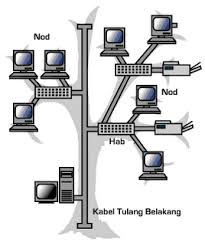Youth pledge oath is authentic evidence that on 28 October 1928 the Indonesian nation was born, therefore it should have all the Indonesian people commemorate the momentum of 28 October as a day of birth of the Indonesian nation, the birth of the Indonesian nation is the fruit of the struggle of people oppressed for hundreds of years under the rule colonialists at the time, this is the condition of oppression which then encourage the youth at that time to resolve to appoint Harkat and Dignity of People Living Indonesian Original, determination that is the commitment of the Indonesian people struggle to successfully achieve its independence 17 years later ie on August 17, 1945 .
The formulation of the Youth Pledge was written Moehammad Yamin on a paper when Mr. Sunario, as a messenger of scouting the middle of a speech at the last session of Congress. Oath was originally read by Soegondo and then explained at length by Yamin.
Youth Pledge original version
First
We the sons and daughters of Indonesia, one who confesses blood bertoempah, Indonesian soil.
Kedoea
We the sons and daughters of Indonesia, who confesses one nation, the Indonesian nation.
Third
We the sons and daughters of Indonesia, mendjoendjoeng language of unity, the Indonesian language.
Youth Pledge Modified version of Spelling Yang:
First
Our sons and daughters of Indonesia, admitted that one bertumpah blood, the homeland of Indonesia.
Second
Our sons and daughters of Indonesia, admitted that one nation, the Indonesian nation.
Third
Our sons and daughters of Indonesia, uphold the national language, Indonesian.
Indonesian Youth Congress
The main article for this section are: Youth Congress
Second Congress of Indonesian Youth
The idea of organizing the Second Youth Congress comes from the Student Association of Indonesian Students (GN), a youth organization which membered students from all over Indonesia. On the initiative GN, congresses held in three different buildings and divided in three meetings.
The first meeting, Saturday, October 27, 1928, in Building Katholieke Jongenlingen Bond (KJB), Waterlooplein (Banteng Square now.) In his speech, chairman GN Sugondo Djojopuspito hope the conference will strengthen the spirit of unity in the hearts of youth. The event was followed by a description Moehammad Yamin on the meaning and relationship of unity with youth. According to him, there are five factors that can strengthen the unity of Indonesia, namely the history, languages, customary law, education, and willingness
The second meeting, Sunday, October 28, 1928, in Oost-Java Bioscoop Building, to discuss education issues. Second speaker, Poernomowoelan and Sarmidi Mangoensarkoro, argued that children should receive education nationality, must also be a balance between education at school and at home. Children also should be educated in a democratic manner.
At the closing meeting, on Clubgebouw Indonesische building on Jalan Raya Kramat 106, Sunario explain the importance of nationalism and democracy in addition to scouting movement. While Ramelan argues, the scouting movement can not be separated from the national movement. Scouting movement since the early to educate children and self-discipline, the things that are needed in the struggle.
Before the congress closed played the song "Indonesia Raya" by Wage Rudolf Supratman who played with the violin without poetry, on the advice Sugondo to Supratman. The song was greeted with a very lively by Congress participants. Congress was closed by announcing the formulation of the congress. By the youth in attendance, it is pronounced as an oath formula Faithful.
Participants
Second Youth Congress participants come from various representatives of youth organizations that exist at the time, such as Jong Java, Jong Ambon, Jong Celebes, Jong Batak, Jong Sumatranen Bond, Bond Islamieten Jong, Sekar Pillars, GN, Youth The Betawi, etc.. Among them there were also some Chinese youth as an observer, namely Oey Kay Siang, John Lauw Tjoan Hok and Tjio Djien Kwie but until now unknown background organization that sent them. Meanwhile, Thiam Kwee Hiong was present as a representative of the Jong Sumatranen Bond. Initiated by the AR Baswedan arab descent youth in Indonesia, held a congress in Semarang and extol the Youth Pledge of Arab descent.
Building
The main article for this section are: the Museum Youth Pledge
Building on Jalan Raya Kramat 106, recited the Pledge of Youth, is a lodging house for students and students belonging Sie Liong Kok
Building 106 was renovated Kramat Jakarta Government 3 April to 20 May 1973 and inaugurated Governor of DKI Jakarta, Ali Sadikin, on May 20, 1973 as a Youth Pledge Building. This building was re-inaugurated by President Soeharto on May 20, 1974. In the course of history, never managed the Youth Pledge Building Jakarta Government, and is currently managed by the Ministry of Culture and Tourism.
















